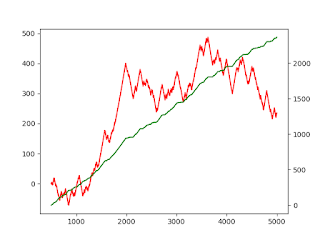1.3 Structured Data: Event driven bars
This post will describe how to process & store High Frequency financial data to support your Machine Learning Algorithm, based on events that happen in the data The post is directly based on content from the book "Advances in Financial Machine Learning" from Marcos Lopez de Prado Physical meaning: The inspiration for event driven bars, is really Control Theory, where control limits (upper & lower) are placed around the mean outcome of a particular system. The outcome of a system will be variable, but the system is determined to be in control if the outcome remains within these upper & lower control limits. When the system is outside these limits, the system is determined to be out of control, and demands attention. In event driven bars, we attempt to compress the financial data, by sampling only when some valuable financial outcome is achieved, e.g. a target level of return is achieved, or a spike in volatility happens. Here, we know that financial data is inheren...

